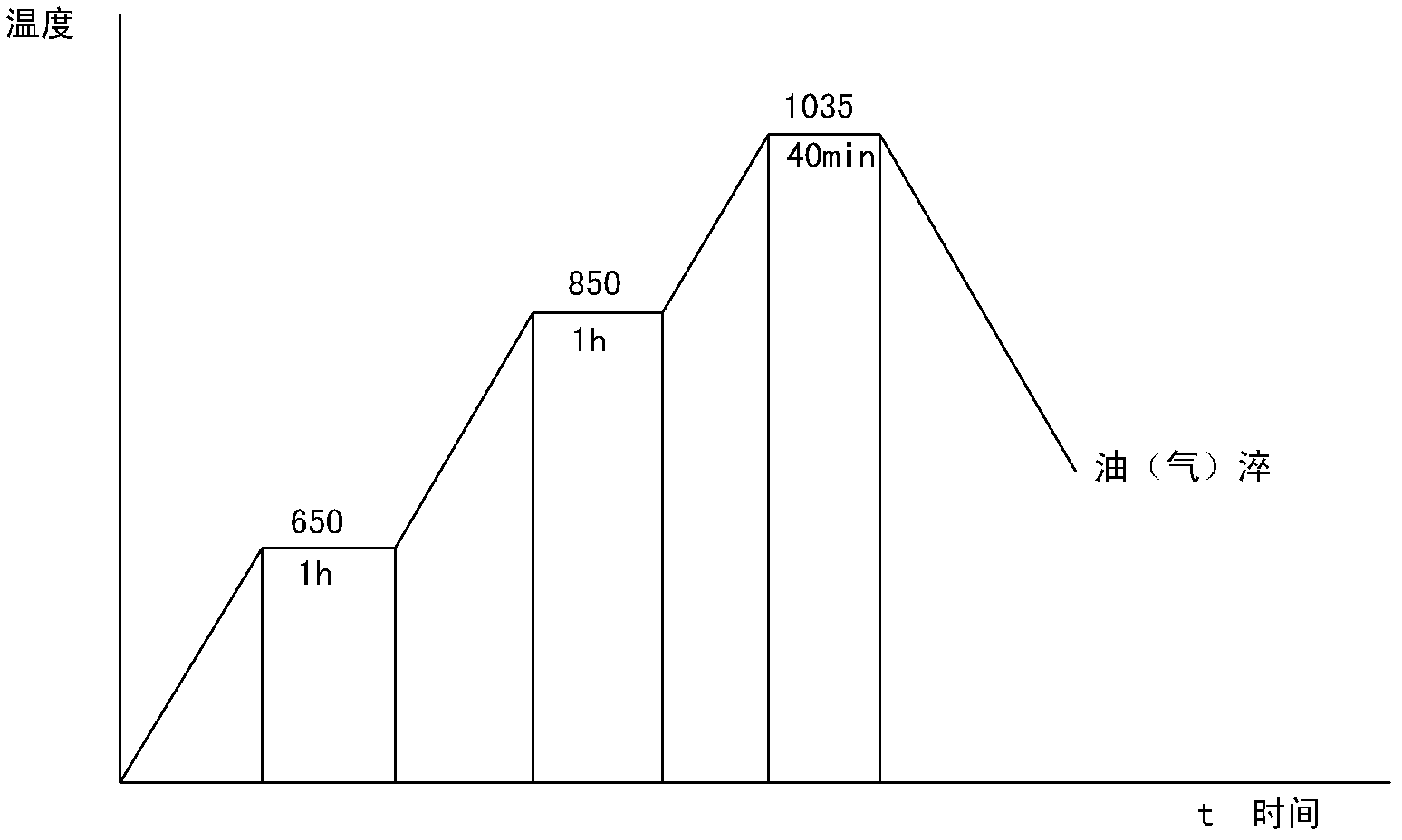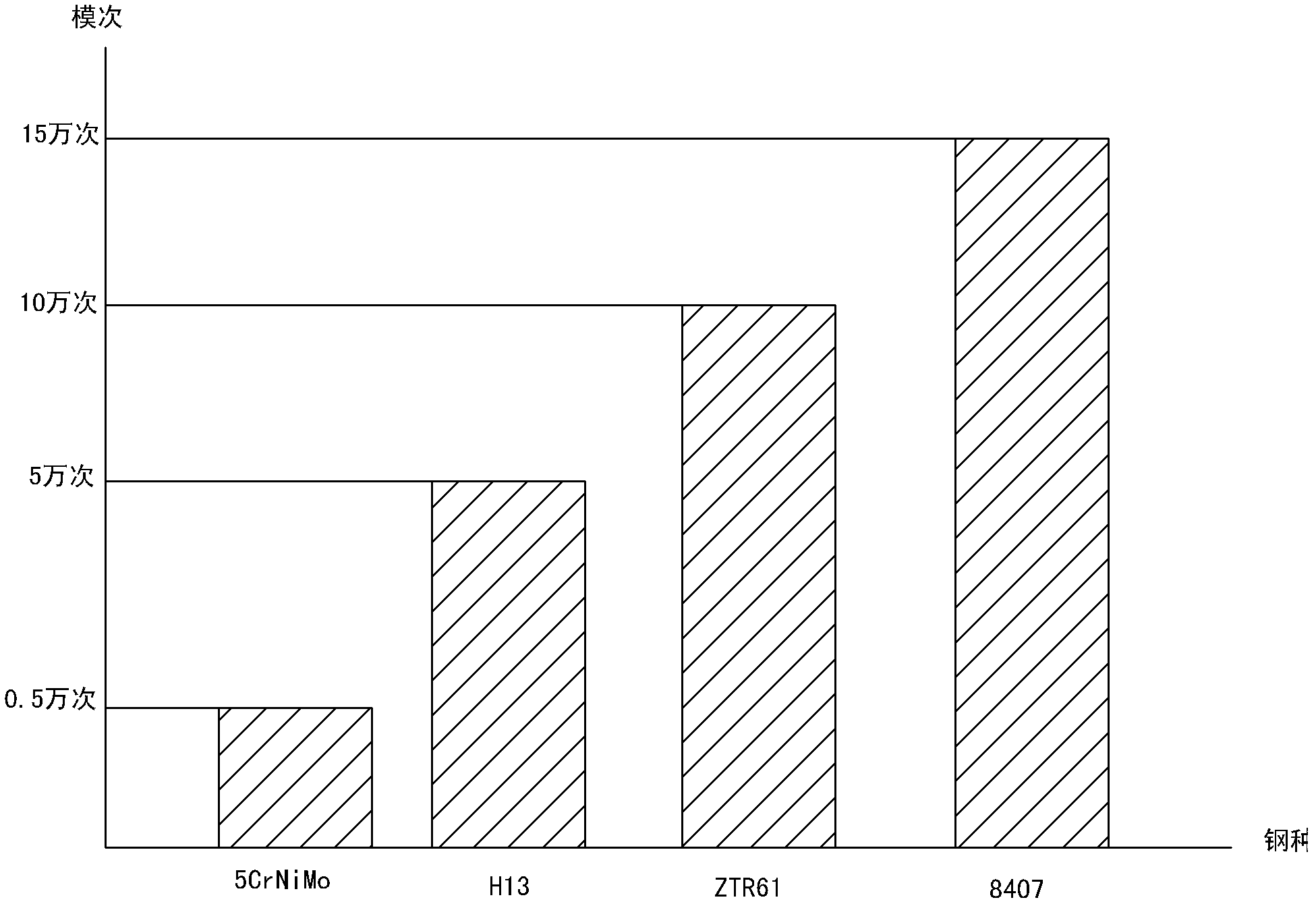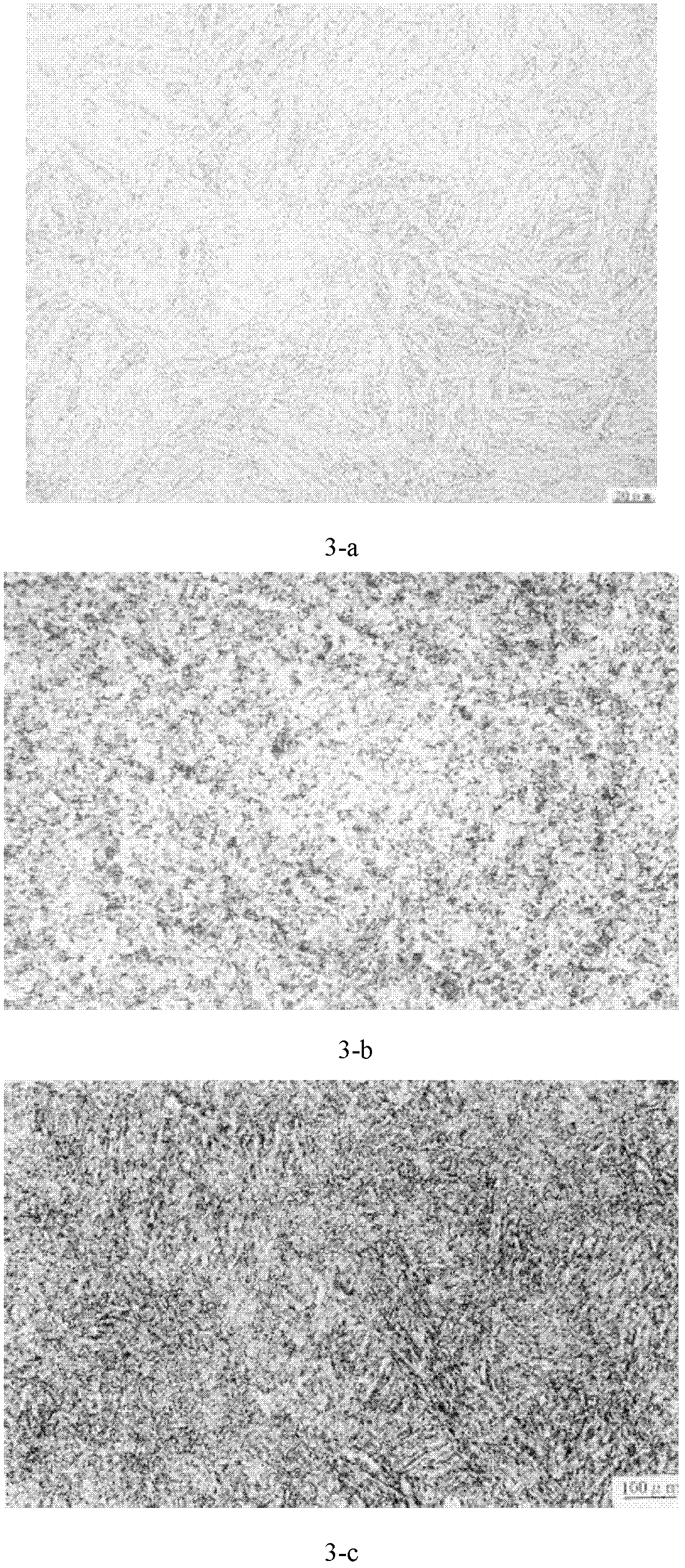Steel material of hot-working die and its production process
A technology of hot work die steel and manufacturing process, which is applied in the field of metal materials and processing, and can solve the problems of plasticity, toughness, thermal conductivity, poor resistance to cold and heat fatigue and corrosion resistance, high cost of imported materials, and low mold repair rate. , to achieve the effect of avoiding brittle cracking, small deformation and good hardenability
- Summary
- Abstract
- Description
- Claims
- Application Information
AI Technical Summary
Problems solved by technology
Method used
Image
Examples
Embodiment 1
[0038] (1) Smelting process: select 1000 kg of high-quality scrap steel with a carbon content of 0.38wt.% as raw material for smelting. During the molten steel smelting process, when the molten steel in the intermediate frequency furnace melts 1 / 3, the furnace temperature is 1350-1450°C. Considering the burning loss rate, first put 88kg of chromium alloy and 4.0kg of molybdenum alloy to fully melt. Put 9.0kg of silicon alloy, 6.5Kg of ferromanganese alloy, and 16kg of vanadium alloy 10 minutes before the furnace is released, and then put in 2kg of silicon-calcium alloy deoxidizer to purify molten steel;
[0039](2) Cast molten steel into steel ingots: preheat the steel ingot mold at 200°C to 300°C, inject the molten steel at a slow and then fast and then slow injection speed, and at 300°C to 500°C, keep it warm for 60 minutes and then demould, and the steel ingot should be kept warm and cooled slowly (into quicklime or large-grained sand pit), exit the pit after 48 hours; stee...
Embodiment 2
[0048] (1) Smelting process: 1000 kg of high-quality scrap steel with a carbon content of 0.39 wt.% is selected as raw material for smelting. During the molten steel smelting process, when the molten steel in the intermediate frequency furnace melts 1 / 3, the furnace temperature is 1350-1450°C. Considering the burning loss rate, first put 89kg of chromium alloy and 4.2kg of molybdenum alloy to fully melt. Put 9.2kg of silicon-containing alloy, 6.8Kg of ferromanganese alloy, and 17kg of vanadium alloy 10 minutes before the furnace is released, and then put in 2kg of silicon-calcium alloy deoxidizer to purify molten steel;
[0049] (2) Cast molten steel into steel ingots: preheat the steel ingot mold at 200°C to 300°C, inject the molten steel at a slow and then fast and then slow injection speed, and at 300°C to 500°C, keep it warm for 60 minutes and then demould, and the steel ingot should be kept warm and cooled slowly (into quicklime or large-grained sand pit), exit the pit af...
Embodiment 3
[0055] (1) Smelting process: 1000 kg of high-quality scrap steel with a carbon content of 0.40wt.% is selected as a raw material for smelting. During the molten steel smelting process, when the molten steel in the intermediate frequency furnace melts 1 / 3, the furnace temperature is 1350-1450°C. Considering the burning loss rate, first put 90kg of chromium alloy and 4.4kg of molybdenum alloy to fully melt. Put 9.5kg of silicon-containing alloy, 7.0Kg of ferromanganese alloy, and 18kg of vanadium alloy 10 minutes before the furnace is released, and then put in 2kg of silicon-calcium alloy deoxidizer to purify molten steel;
[0056] (2) Cast molten steel into steel ingots: preheat the steel ingot mold at 200°C to 300°C, inject the molten steel at a slow and then fast and then slow injection speed, and at 300°C to 500°C, keep it warm for 60 minutes and then demould, and the steel ingot should be kept warm and cooled slowly (into quicklime or large-grained sand pit), exit the pit a...
PUM
| Property | Measurement | Unit |
|---|---|---|
| thermal resistance | aaaaa | aaaaa |
| compressive strength | aaaaa | aaaaa |
| flexural strength | aaaaa | aaaaa |
Abstract
Description
Claims
Application Information
 Login to View More
Login to View More - R&D
- Intellectual Property
- Life Sciences
- Materials
- Tech Scout
- Unparalleled Data Quality
- Higher Quality Content
- 60% Fewer Hallucinations
Browse by: Latest US Patents, China's latest patents, Technical Efficacy Thesaurus, Application Domain, Technology Topic, Popular Technical Reports.
© 2025 PatSnap. All rights reserved.Legal|Privacy policy|Modern Slavery Act Transparency Statement|Sitemap|About US| Contact US: help@patsnap.com



